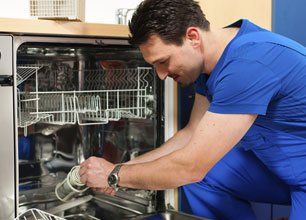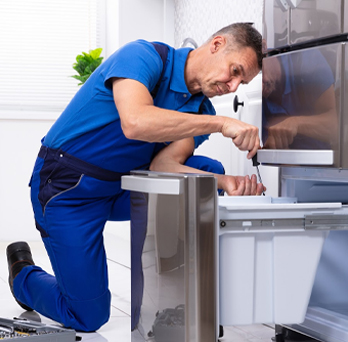Catch Problems Before They Escalate—Tips from Dependable Refrigeration Appliance SubZero repair near me
The Ultimate Guide to DIY Appliance Repair Service Methods
From fridges to dishwashers, comprehending just how to troubleshoot and repair these tools can conserve you time and money. Are you prepared to find crucial strategies that will encourage you to take care of repair services confidently?
Recognizing Usual Home Appliance Problems
When you depend on your home appliances, it can be annoying when they instantly stop functioning or act up. Comprehending typical home appliance problems can help you troubleshoot concerns efficiently. If your fridge isn't cooling, check the temperature setups or check the door seal for spaces. A defective washing equipment could be because of a blocked drainpipe filter or a busted belt.
If your oven isn't heating, defective elements or thermostat issues can be to criticize,. Dishwashers often experience issues with drainage, so make certain the filter is clean and the drainpipe hose pipe isn't kinked.
Also, pay attention for unusual audios; they commonly indicate mechanical problems. By recognizing these indications, you can save time and potentially avoid pricey repair services. A little knowledge goes a long method in maintaining your home appliances, so stay notified to maintain whatever running efficiently.
Vital Devices for Do It Yourself Fixes
Before diving right into do it yourself appliance repair services, it is essential to gather the right devices to guarantee the procedure goes efficiently. Beginning with a great set of screwdrivers, including both flathead and Phillips, as they're important for opening most appliances. You'll additionally want a set of pliers for clutching and twisting cables or tiny parts.
Do not forget a multimeter; it helps you test electric parts and detect issues efficiently. An outlet collection is useful for loosening or tightening screws, while an energy blade can be valuable for opening up or reducing cables product packaging.
Finally, think about having a flashlight available to light up dark rooms inside your home appliances. With these vital tools, you'll be fully equipped to take on various repair services, conserving both time and cash. Collect your gear and obtain ready to roll up your sleeves!
Safety First: Precautions to Take
Before you start any appliance repair service, it's essential to prioritize safety. Make sure you use personal protective tools, separate the source of power, and maintain your workspace arranged. These straightforward preventative measures can aid stop mishaps and ensure a smoother repair service process.

Individual Protective Tools
Safety and security gear is a vital component of any type of do it yourself appliance repair service task. You need to constantly wear safety goggles to protect your eyes from dust and debris. A strong set of handwear covers will certainly secure your hands from sharp sides and unsafe products. Think about using a mask if you're handling chemicals or dust, guaranteeing you breathe safely while working. Steel-toed boots are also a smart choice, specifically when raising hefty devices. Do not fail to remember to use long sleeves and pants to protect your skin from possible injuries. By focusing on individual safety devices, you'll considerably minimize the risk of injuries and accidents. Remember, being prepared with the right equipment keeps you safe and concentrated on finishing your repair work successfully.
Source Of Power Disconnection
To assure a risk-free do it yourself home appliance fixing, detaching the source of power is essential. Before you begin any type of work, you must transform or unplug the home appliance off the circuit breaker. This easy action stops electrical shocks and assurances that you can focus on the repair service without stressing over unintended activation. Always ascertain that the appliance is off by checking it with a voltage tester. If you're managing larger home appliances, like a washing machine or clothes dryer, see to it to protect the power cable and avoid any type of call with water. Keep in mind, security initially! As soon as you're confident that the power is detached, you can with confidence continue with your repairs, knowing you've taken the needed precautions to safeguard yourself.
Workplace Company
An efficient workplace can make all the distinction in your DIY device repair service job. Begin by clearing your workspace of mess to stop disturbances and crashes. Set out all your products and tools, grouping comparable products together for easy accessibility. Make use of a tool kit or organizer to keep small components like washing machines and screws included and labeled. See to it you have actually obtained appropriate illumination; it'll help you see information clearly and minimize the risk of blunders. Don't forget to maintain security gear like handwear covers and safety glasses accessible. Have a garbage bag useful to dispose of waste quickly. A tidy room not only enhances effectiveness but additionally keeps you secure while you work with your appliance repair.
Step-by-Step Guide for Refrigerator Services
When your refrigerator begins breaking down, it can be discouraging, yet tackling the issue on your own can save you time and money. Unplug the refrigerator to ensure safety. Look for typical issues like temperature level variations or unusual noises. Check the thermostat settings; they could be established too high if it's not cooling down. Next, clean the condenser coils, which frequently gather dirt and particles. For a noisy fridge, check the fan and validate it's not blocked.
If there's water merging inside, examine the door seals for damage or dirt, and clean them if necessary. For ice accumulation, clear the defrost drain. Connect the fridge back in and check it for a couple of hours as soon as you've resolved the issue. If the issue continues, you might need to replace a defective component, like the compressor or fan electric motor. Remember, don't hesitate to speak with the guidebook or seek specialist assistance if needed.
Repairing Washing Equipment Problems
Much like fridges, washing makers can present their own collection of challenges, however several issues can be solved with a little bit of troubleshooting. First, if your maker will not start, inspect the power cable and verify it's plugged in. Next off, examine the door lock; a malfunctioning lock can stop the cycle from beginning. If you notice uncommon sounds throughout procedure, it could be as a result of international items stuck in the drum or the drain pump.
Tightening these can usually fix the issue. Routine upkeep, like cleaning up the filter, can avoid many problems from developing.
Fixing Ovens and ovens
Just how can you repair typical issues with your stove or cooktop? Start by checking the power recommended you read supply. Ensure it's connected in and the breaker is not stumbled. If it's a gas cooktop, verify the gas valve is open. Next, examination the heaters: if they don't spark, clean up the igniter and look for clogs in the heater ports.
If your stove isn't heating, inspect the temperature level settings and validate the door seals firmly. A malfunctioning home heating aspect can also be the culprit; why not try these out you could require to replace it if it's damaged.
For uneven food preparation, revolve your pans and think about making use of an oven thermometer to confirm accurate temperature levels. Lastly, if you listen to unusual noises or smell gas, switch off the device immediately and get in touch with an expert. By adhering to these steps, you can recognize and fix many usual stove and range problems successfully.
Repairing Dish Washers Made Easy
When your dish washer starts acting up, it can be aggravating, but attending to common concerns isn't as difficult as it seems. You'll find out detailed troubleshooting methods that will certainly aid you determine the trouble, together with the crucial devices you'll need to deal with repair work yourself. Allow's make repairing your dishwashing machine a breeze!
Common Dishwashing Machine Concerns
While dishwashing machines are developed to make your life easier, they can often run into typical issues that leave you really feeling annoyed. If your dishwasher's door won't lock, it might be an easy concern with the latch mechanism or door seal. Addressing these concerns early can save you time and hassle down the roadway.

Step-by-Step Troubleshooting
Before diving into repair work, it's important to determine the particular problem your dishwashing machine is dealing with. If your dishwashing machine won't start, check the power supply and door latch. By carefully addressing each possible concern, you can determine the trouble and take the needed steps to fix it, making your dishwashing machine function like new once more.
Essential Repair Tools
Having the right tools at your disposal can make all the distinction when fixing your dishwasher. Do not fail to remember a bucket or towels for any kind of water splashes during fixings.
If you're dealing with clogs, a drainpipe snake or a wet/dry vacuum cleaner will be vital. You might additionally desire a level to guarantee your dish washer's appropriately aligned. Finally, safety and security gear like gloves and safety glasses will protect you while you function. With these essential devices, helpful hints you'll be well-appointed to deal with any type of dishwasher repair obstacle that comes your method.
Often Asked Inquiries
If an Appliance Is Well Worth Repairing?, exactly how Do I Establish.
To identify if a device's worth fixing, consider its age, repair service prices, and current value. If repair services surpass half the substitute price, you might intend to purchase a new model rather.
Can I Discover Substitute Components In Your Area for My Home Appliance?
Yes, you can often locate substitute parts locally for your appliance. Check equipment shops, home appliance repair service shops, or local classifieds. Do not neglect to bring the design number to guarantee you obtain the right part!
When Repairing Devices?, what Typical Mistakes Should I Avoid.
When fixing home appliances, avoid hurrying through diagnostics, ignoring safety and security precautions, or using wrong devices. Do not avoid reading handbooks or viewing tutorials; they give crucial assistance. Be patient and thorough to ensure successful repair services and prevent more damage.
For how long Does a Regular DIY Device Repair Work Take?
A typical DIY appliance repair normally takes one to 3 hours, depending upon the intricacy. You'll wish to collect your tools and products initially, and comply with instructions meticulously to prevent unneeded delays.
Exist Any Guarantees for DIY Home Appliance Repair Works?
When you tackle do it yourself appliance fixings, guarantees generally do not cover your work. Some manufacturers might honor warranties for parts you replace. Always inspect your appliance's warranty terms prior to beginning any type of fixings to avoid issues.
Prior to diving right into DIY device fixings, it's crucial to collect the right tools to guarantee the procedure goes efficiently.Before you begin any device repair work, it's important to focus on safety.To ensure a secure DIY device repair service, separating the power source is necessary.An efficient work location can make all the distinction in your Do it yourself appliance repair work job. Constantly examine your home appliance's service warranty terms prior to starting any type of repair work to avoid issues.